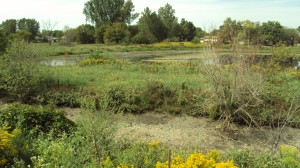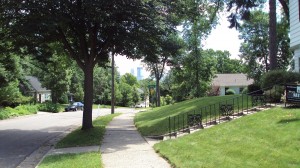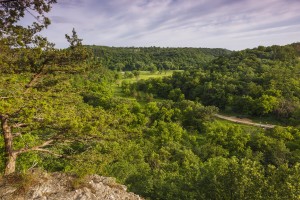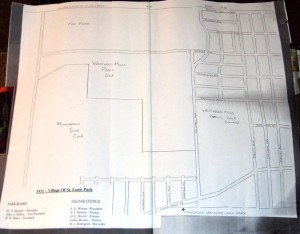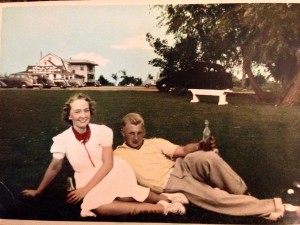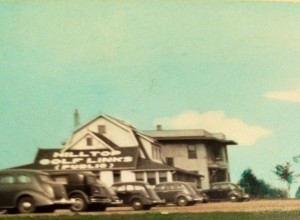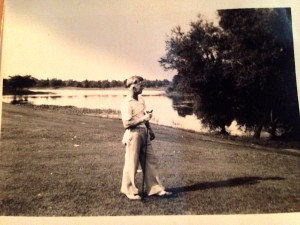
Lessons, questions and observations from the Minnesota Golf Show, which ended its three-day run Sunday at the Minneapolis Convention Center and was a 25-hour surge of adrenaline for yours truly, operating out of Booth 602 …
… oh, one thing first. I don’t approach the game from the middle of the fairway anymore, which is to say this will not be typical golf commentary. Don’t expect thoughts on some club pro’s demonstration of the stack-and-tilt swing, which is as foreign to me as Isao Aoki was in 1980, when he was leading the U.S. Open and I was a small-town kid who had previously heard of exactly zero golfers from a far-off land known as Japan:
— Make sure people know what you’re selling. I gotta give myself a C-minus on that one. The most prominent item at my Golf Show booth was a version of the artwork below:
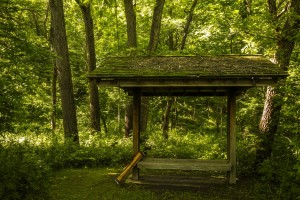
More than one person asked me what golf course this was — the “was” intended to mean “is.” Yep — they thought I was manning a booth promoting a course that’s still operating. And I could almost hear them wondering to themselves, “What in the name of Duffy Waldorf is that junkyard, and why in the name of Forrest Fezler would I want to play there? They might want to spend their next 20 dollars on maintenance!”
The photo is, of course, a remarkable piece composed and taken by friend and collaborator Peter Wong, captured on the lost course at Whitewater State Park in southeastern Minnesota, and it wound up as the cover image on my new book, “Fore! Gone.” But clearly, I confused people with the photo, which I also have turned into a lost-course poster, and by the time I realized it, it was pretty much too late to hand-craft a large sign in the back of the booth with this proclamation: “IT’S NOT A GOLF COURSE. IT’S A BOOK, DAMMIT!”
— Tell me more, tell me more. I can’t deny some trepidation as patrons started filing in on Friday. I knew I had done a ton of homework on lost golf courses since mid-2010, but I half expected 50 people to stop by and say, “You missed this one.”
Didn’t happen. Not much, anyway. At least a half-dozen people mentioned the old Cedar Hills course in Eden Prairie, which was a ski hill in the wintertime (and apparently closed in part because poo-bahs at Flying Cloud Airport were concerned about the remote possibility of low-flying aircraft giving propeller buzz cuts to tall golfers on the property). But I didn’t write about Cedar Hills, because my research indicated it closed after the year 1999, and that’s where I cut off my research.
Props, however, to the two Golf Show patrons who mentioned long-ago lost courses
I hadn’t heard of, one in Rush City and the other in Foley. I never came across old courses in those towns while researching, but I don’t doubt they existed. I’d love to hear from someone with details.
Actually, I have to believe I one-upped some of the Cedar Hills contingent by springing a lost course on the many people I met from the Eden Prairie/Chaska/Chanhassen/Shakopee area. Not one person had heard of the old Mudcura Golf Club off what is now Flying Cloud Drive, and only one duly impressed me by having heard of the long-gone Mudcura Sanitarium that was adjacent to the golf course. (Want to know more? No problem. Buy the book.)
— What else is lost? A couple of months ago, I posted news of more Minnesota golf courses that had or were about to close for good. Time for an update:
For one thing, I missed a course: Elm Creek in Plymouth closed as of the end of the 2013 season and will give way to high-end homes, the Star Tribune has reported. For another, one closed course — Mississippi National in Red Wing — appears set to reopen. The city of Red Wing website noted in a Nov. 26 posting that the city and the Red Wing Municipal Golf Corporation struck a five-year lease agreement, and that the non-profit group would operate the course and reopen it in 2014. “The City,” the website posting noted, “will contribute no more than $41,000 in financial support for 2014 operations, and no more than $169,000 in Capital Investment in the golf course in 2014.”
Also, someone told me Friday at the Golf Show that Sawmill Golf Course in Grant is now closed. One Minnesota golf website has reported that, but the posting appears to have been misleading at best. Newspapers including the St. Paul Pioneer Press have reported that a lease agreement between the owners of the Sawmill land and the group that operated the golf course has been terminated, but it appears likely Sawmill will remain open in the 2014 season, albeit under new management.
— Did I miss something in fifth-grade geography? I could swear Sister Mary Ellen (no, not Sister Mary Elephant; I really did have Sister Mary Ellen as a grade-school teacher) taught us that Minneapolis and St. Paul were the two most-populous cities in Minnesota.
Not so, judging by the purely unscientific survey of folks I talked to in the show’s three days.
As an entree’ to hooking them for a book sale (occasionally the strategy even worked), I would ask visitors to my booth where they were from, in hopes of telling them about a lost golf course nearby.
It went something like this.
“So, where you from?”
“Coon Rapids.”
“Coon Rapids.”
“Maple Grove.”
“Plymouth.”
“Coon Rapids.”
“Minneapolis.”
“Coon Rapids.”
“Plymouth.”
“Eden Prairie.”
“Coon Rapids.”
“Right here.” (Gosh, thanks for narrowing it down, pal.)
“Coon Rapids.”
“St. Paul.”
“Maple Grove.”
“Anoka.”
“Coon Rapids.”
It was weird. What, did half the state’s population climb into canoes, row upriver 20 miles and resettle in Coon Rapids?
There is no point to all of this, other than to observe the unusual concentration of Coon Rapidsians, or whatever they are called, who stopped at my booth. Nonetheless, I did appreciate their stopping, and I enjoyed chatting briefly about the lost Jake’s / Mississippi Golf Course in their fair city.
— Best new gadget: The term “gadget” doesn’t do it justice, but the heated golf-cart seat covers and blankets from Joe Pro Products are new and cool. Or warm, actually. They fit neatly over any standard golf-cart seat and, according to the product website, are made of “soft synthetic lambs wool on one side (and) durable nylon on the other. Washable and waterproof also available in multiple colors.” Prices and packages range from $49.95 to $109.95. More info is at www.joeproproducts.com.
The products are the brainchild of Joe Stansberry, a longtime accomplished Minnesota golfer. I’m just guessing the inspiration might have come from a chilly, windswept trek down the fairways of Royal Portrush or Royal County Down, where Joe, a former European Senior Tour player, might have gotten his tush Royally Frozen.
